 |
|
GOES-T (Atlas V) 1 March 2022 |
Space Launch Complex 41 Cape Canaveral Space Force Station |
| A United Launch Alliance (ULA) Atlas V rocket carrying the GOES-T spacecraft for the National Oceanic and Atmospheric Administration (NOAA) and NASA lifted off on 1 March 2022 at 4:38 p.m. from Space Launch Complex-41 at Cape Canaveral Space Force Station. After GOES-T launches, it will be renamed GOES-18 once it reaches geostationary orbit. GOES-18 will work in tandem with GOES-16, NOAA’s operational GOES East satellite. Together, GOES-16 and GOES-18 will watch over more than half the globe – from the west coast of Africa to New Zealand. GOES-17 will become an on-orbit spare. | |
LONG DISTANCE VIEWS OF THE LAUNCH |
|
 |
|
 |
|
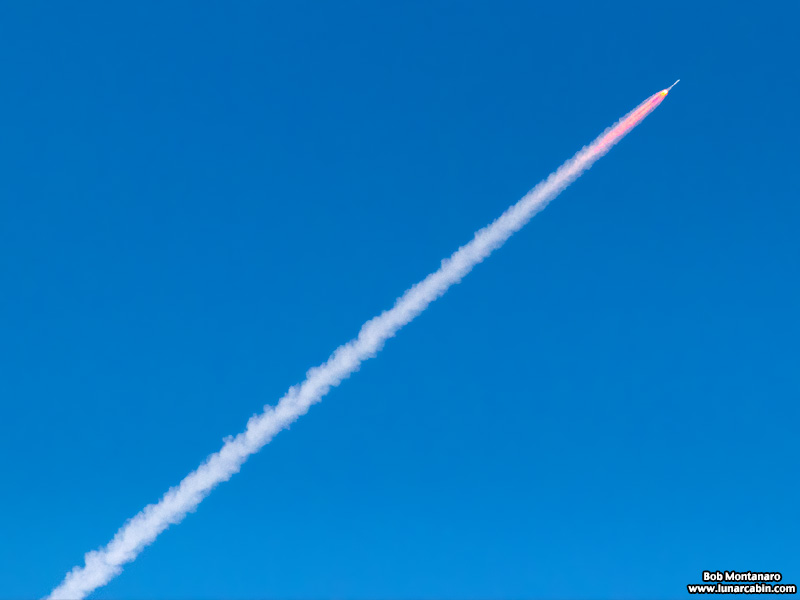 |
|
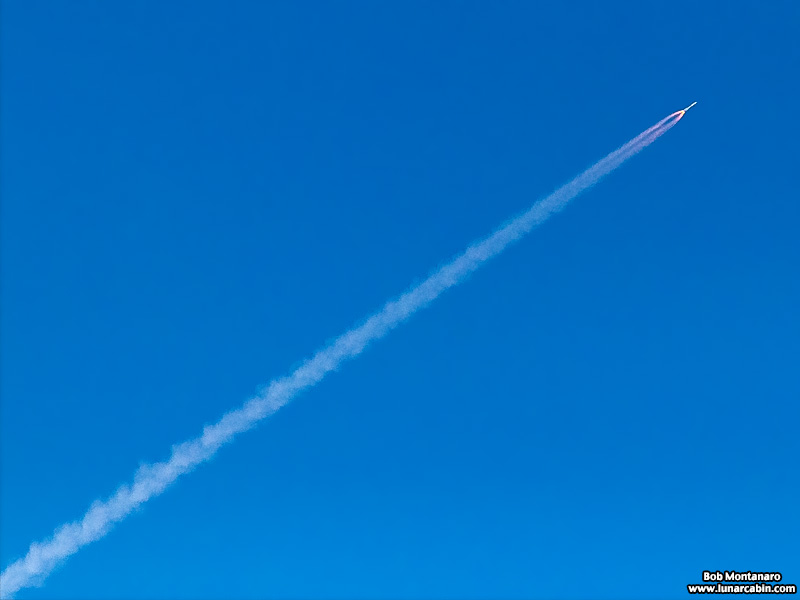 |
|
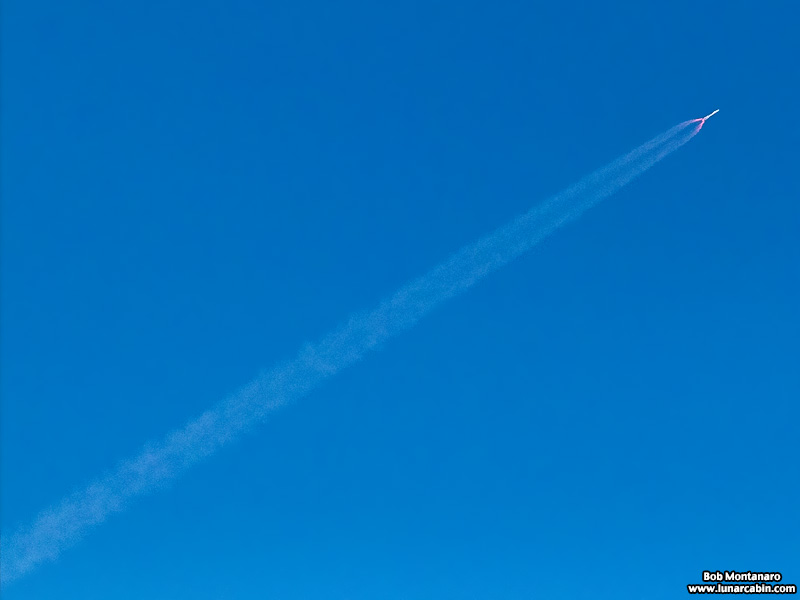 |
|
FROM THE UNITED LAUNCH ALLIANCE PRESS RELEASE |
|
GOES-T will provide NASA and NOAA with continuous imagery and atmospheric measurements of Earth’s Western Hemisphere, lightning detection and mapping, solar imaging and space weather monitoring. This is the third satellite in NOAA’s GOES-R Series, and will continue the revolutionary improvements brought by GOES-R and GOES-S, also launched on ULA’s Atlas V rocket. NOAA manages the GOES-R Series program through an integrated NOAA-NASA office, administering the ground system contract, operating the satellites, and distributing their data to users worldwide. NASA’s Goddard Space Flight Center oversees the acquisition of the GOES-R spacecraft and instruments and NASA’s Launch Services Program at Kennedy Space Center manages the launches. Lockheed Martin designs, produces and tests the GOES-R series satellites. L3Harris Technologies provides the main instrument payload, the Advanced Baseline Imager, along with the ground system, which includes the antenna system for data reception. |
|
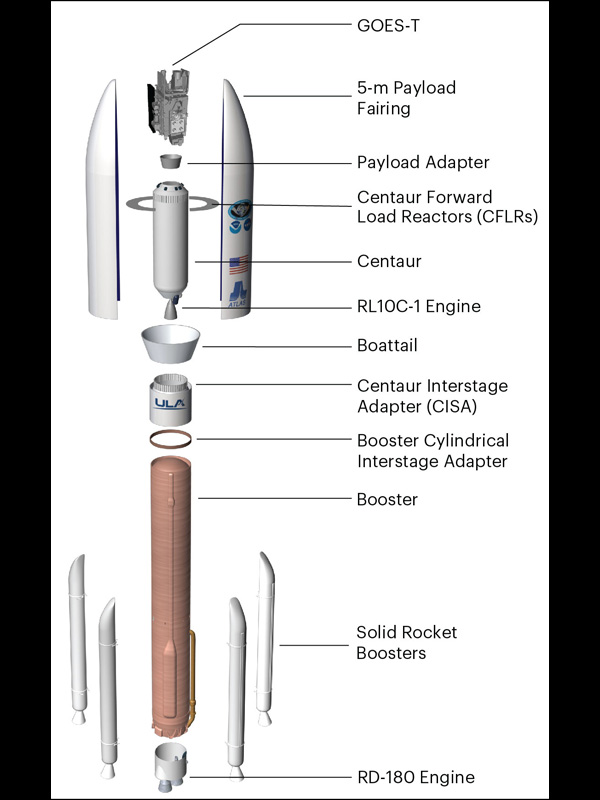 |
|
Atlas-V configuration used for the GOES-T launch. IMAGE: ULA |
|
Payload Fairing (PLF) Centaur Booster |
|
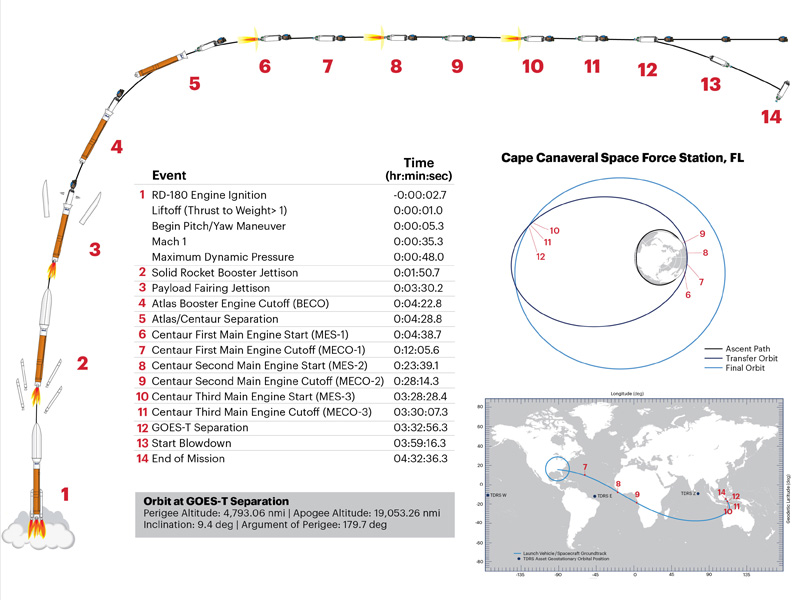 |
|
The Atlas-V flight profile for the GOES-T launch. IMAGE: ULA |
|
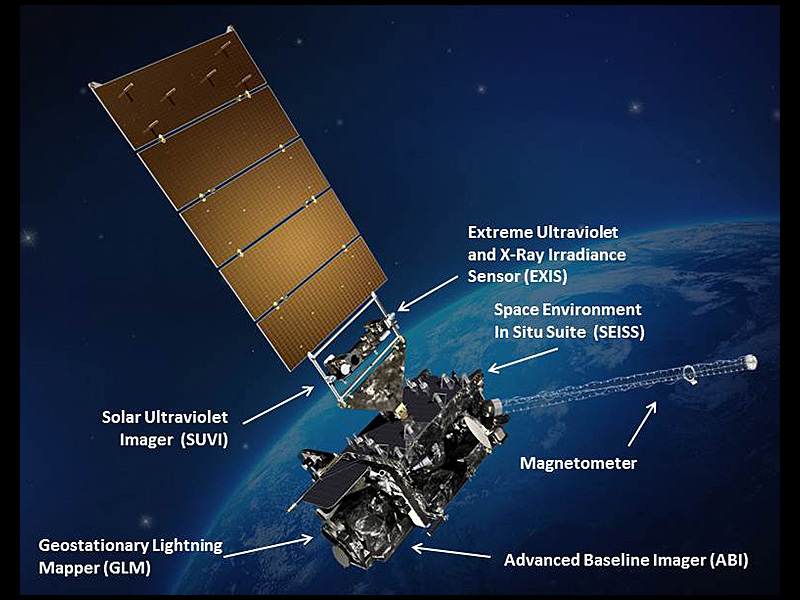 |
|
The GOES-T satellite. IMAGE: NOAA / NASA |
|
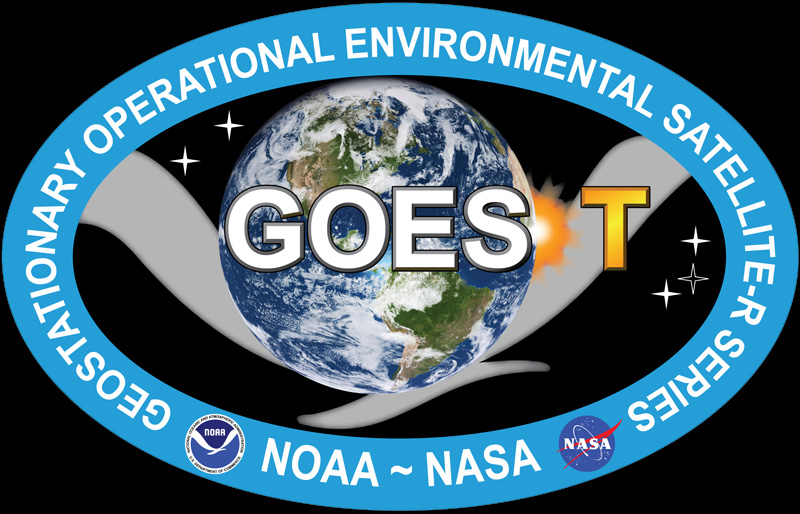 |
|
GOES-T mission logo. IMAGE: NOAA / NASA |
|
All contents copyright Lunar Cabin |
|